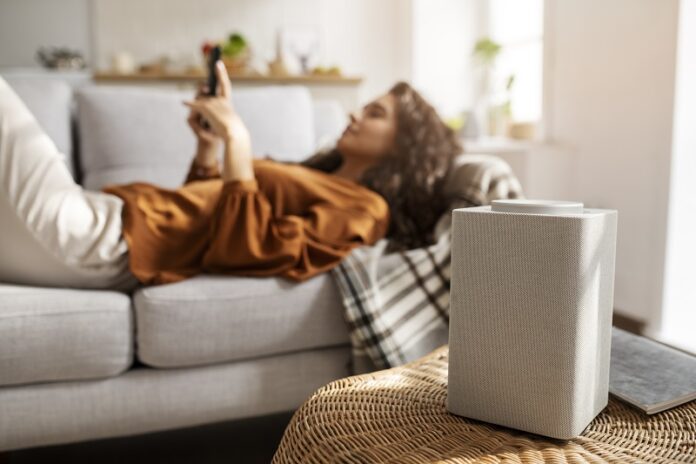
A small room dehumidifier is a must-have appliance for anyone looking to remove excess moisture from the air and prevent mold, mildew, and bacteria growth in confined spaces. With the right small room dehumidifier, you can easily control humidity levels and create a more comfortable environment in your home. This comprehensive guide will teach you everything you need to know about how small room dehumidifiers work, the key factors to consider when choosing one, tips for proper use and maintenance, and reviews of the top models on the market.
What Is a Small Room Dehumidifier and How Does It Work?
A small room dehumidifier is a portable, compact appliance designed to reduce humidity levels and remove moisture from the air in small enclosed spaces up to 1,500 square feet. The main rooms where small portable dehumidifiers are helpful include bathrooms, bedrooms, laundry rooms, offices, basements, and attics.
They work by drawing moist air into the unit using an internal fan. The air then passes over cold evaporator coils where the moisture condenses and drips into a collection tank or out through a drainage hose. The dehumidified air is then reheated and blown back out into the room. This process continually reduces the relative humidity, making the air feel drier and more comfortable.
There are three main types of dehumidifiers:
- Refrigerant or Compressor Dehumidifiers – These are the most common and use a refrigeration system with a compressor and coils like a refrigerator or air conditioner.
- Desiccant Dehumidifiers – These use a material called a desiccant, like silica gel, to absorb moisture from the air.
- Thermo-Electric Dehumidifiers – These use a special semiconductor and electric current to condense moisture. They don’t have compressors or desiccants.
For home use, refrigerant dehumidifiers tend to be the most effective and affordable option. The size of the room will determine the capacity needed, which is measured in pints of moisture removal per day. Smaller rooms need capacities from 20-50 pints per day.
Key Factors to Consider When Selecting a Dehumidifier
There are several important factors to evaluate when choosing the best small room dehumidifier for your needs:
Room Size
Select a unit with a capacity that aligns with the room size you need to dehumidify. A dehumidifier undersized for a space will have to work harder and run longer to reduce humidity. An oversized unit is less energy efficient and wastes money.
- Bathrooms up to 100 sq. ft. need 20-30 pint/day capacity
- Bedrooms 100-150 sq. ft. need 25-35 pint/day capacity
- Medium rooms 150-500 sq. ft. need 35-50 pint/day capacity
Tank Size
Look for a tank size that reduces emptying frequency, especially if you don’t have a drain hose setup. Standard tanks are 1-1.5 gallons, but large 2-2.5 gallon tanks only need emptying every 1-2 days.
Drainage Options
Dehumidifiers either collect moisture in a tank that needs regular manual emptying or allow drainage via a hose to a floor drain. An internal condensate pump automates drainage by pumping water through a hose.
Automatic Shutoff and Humidistat
Units with humidistats let you set a target humidity level between 30-80%. An automatic shutoff turns the dehumidifier off when the collection tank is full or the target humidity is reached.
Noise Level
Compressor dehumidifiers can be noisy. Look for quiet operation of around 50 decibels for bedroom use. Larger fan sizes move more air but are often louder.
Additional Features
Some models offer beneficial extras like air filtration, defrost mode for low temperatures, timers, casters for portability, and laundry drying modes.
Reliability and Warranty
Choose a reputable brand known for quality and reliability. Most come with 1-2 year warranties.
Cost
You can find reliable small room dehumidifiers ranging from $120 on the low end to $300+ for those with more power and features. Calculate the cost per pint of moisture removal to compare values.
The Benefits of Using a Small Room Dehumidifier
Installing and running a small room dehumidifier provides a wide range of benefits beyond simply reducing humidity:
Prevents Musty Odors and Stale Air
Stagnant moisture leads to stale, musty smells in enclosed spaces. A dehumidifier keeps air feeling fresh.
Inhibits Mold, Mildew, and Bacteria
By limiting humidity, a dehumidifier prevents mold, mildew, and bacteria from growing in damp environments.
Protects Against Condensation and Water Damage
Reducing moisture buildup on windows, walls, and fixtures minimizes condensation that leads to water stains and decay.
Improves Overall Air Quality
Removing humidity allows a dehumidifier to also eliminate allergens like dust mites that thrive in damp air.
Makes Living Spaces Feel More Comfortable
Dry air between 30-50% relative humidity feels fresher indoors and helps regulate temperature.
Accelerates Laundry Drying Time
Run a dehumidifier in a laundry room to extract moisture from the air and decrease drying time.
Safeguards Valuables
Humidity damages furnishings, electronics, musical instruments, books, and artwork over time. A dehumidifier protects them.
Tips for Using and Maintaining a Small Room Dehumidifier
Follow these best practices to get the most out of your small room dehumidifier:
Optimal Placement
Place the dehumidifier on a level surface with at least 12 inches of clearance on all sides for air circulation. Don’t block the air intake and outlet grills.
Proper Drainage
Check the collection tank frequently and empty it before it overflows. For constant drainage without emptying, install a gravity drain hose routed downward to a floor drain.
Change Air Filters
Clean the air filter every 2-4 weeks to remove dust buildup. Neglecting the filter reduces airflow and effectiveness.
Allow Regular Defrosting
In cool rooms below 65°F, frost can accumulate on the coils and reduce performance. Set the unit to defrost mode to melt the ice.
Adjust Humidistat Settings
Use a hygrometer to monitor humidity and adjust the humidistat to maintain ideal levels between 30-50% relative humidity.
Store Properly When Not in Use
Before storage, drain the tank fully, run the unit on fan mode for a half hour, and clean the filter. Store upright in a dry location.
Follow Maintenance Tips
Routinely clean the exterior and check parts like hoses and wiring for damage. Follow all maintenance instructions from the manufacturer.
Troubleshoot Issues Quickly
If the unit isn’t collecting water, check for a full tank, clogged filter, or frozen coils. Consult the manual for other troubleshooting tips.
Know When to Call a Professional
For major issues like refrigerant leaks or electrical problems, contact a certified HVAC technician for service and repairs.
Reviews of the Best Small Room Dehumidifiers
Ivation 20 Pint Small-Area Desiccant Dehumidifier
This popular compact and portable unit uses advanced desiccant technology for whisper-quiet operation and auto shutoff when the 1.06 gallon tank is full. Ideal for rooms up to 270 square feet.
Pros: Advanced desiccant dehumidification, whisper quiet at 41 dB, auto shutoff, portable with handle
Cons: Tank empties quickly in damp spaces, relatively low capacity
Specs: 20 pint/day capacity, 41 dB noise level, weighs 9 pounds
Price: $$$
hOmeLabs 1500 Sq. Ft Energy Star Dehumidifier
This affordable refrigerant dehumidifier removes up to 22 pints of moisture per day and has a 1.6 gallon tank and auto shutoff when full. The caster wheels make it portable.
Pros: Energy efficient, 22 pint capacity, large tank, auto shutoff, good for basements
Cons: Noisy compressor, occasional leaks, less durable feel
Specs: 22 pint capacity, 1.6 gallon tank, 56 dB noise level
Price: $$
Afloia 17 Pint Compact Dehumidifier
A compact and lightweight 17 pint/day unit perfect for bathrooms and bedrooms up to 215 square feet. Features auto shutoff and an easy-access 1.14 gallon water tank. Quiet operation around 53 decibels.
Pros: Compact size, 17 pint capacity, auto shutoff when full, quiet
Cons: Smaller tank needs frequent emptying, fan stops during defrost
Specs: 17 pint capacity, 1.14 gallon tank, 7 pounds
Price: $
Pro Breeze Electric Mini Dehumidifier
This bestselling mini dehumidifier removes up to 9 ounces of moisture per day. Ideal for tiny spaces like closets, RVs, and bathrooms around 100 square feet. Automatic shutoff and whisper-quiet operation.
Pros: Extremely compact and lightweight, good for very small rooms, auto shutoff, inexpensive
Cons: Very low pint capacity, tank fills quickly, not for larger rooms
Specs: 9 oz/day capacity, 16 oz tank, 2.2 pounds
Price: $
Eva-Dry EDV-1100 Petite Dehumidifier
This compact Eva-Dry model uses advanced silica gel technology to absorb moisture, with no compressor or refrigerants. Good for areas around 100 square feet. No electricity required – just plug it in and it starts absorbing humidity.
Pros: No outlet needed, simple and portable, colorful and cute design, affordable
Cons: Absorbs less moisture than compressor models, gel needs occasional renewal
Specs: 6-8 oz daily moisture absorption, no tank, 2 pounds
Price: $
Also Read: HOW TO FIND E WASTE RECYCLE NEAR ME: AN IN-DEPTH GUIDE
Conclusion
Adding a small room dehumidifier to spaces prone to excess humidity offers an easy and affordable way to control moisture, prevent mold growth, eliminate odors, and protect your furnishings and valuables. Compressor-based refrigerant models offer the best performance for most homes. Calculate the proper pint capacity you need based on room size and look for convenient features like large tanks, continuous drainage options, humidistats, and automatic shutoff. With some simple maintenance, a quality small room dehumidifier will provide years of dry and comfortable indoor air.
Frequently Asked Questions and Answers about Small Room Dehumidifiers:
Q: What size dehumidifier do I need for a small room?
A: Choose a dehumidifier with a pint capacity that matches the square footage of the room. For rooms up to 100 sq ft, get a 20-30 pint/day unit. For 100-150 sq ft, aim for 25-35 pint capacity. Go with 35-50 pint capacity for 150-500 sq ft rooms.
Q: Where is the best place to put a small room dehumidifier?
A: Place the dehumidifier on a level surface with at least 12 inches of clearance on all sides for proper air circulation. Don’t block the air intake and outlet. Position it away from walls and furniture.
Q: How do I drain a small room dehumidifier continuously?
A: Use a gravity drainage hose that routes downward from the unit into a floor drain to avoid having to empty the tank. Make sure the hose is angled down and not kinked.
Q: What maintenance does a small dehumidifier need?
A: Clean the air filter every 2-4 weeks by removing and rinsing it. Let it air dry before replacing. Occasionally wipe down the unit with a damp cloth to keep it clean. Store the unit upright and covered during long periods of disuse.
Q: How can I tell if my small dehumidifier is working properly?
A: Check that it is collecting water in the tank and empties fully each cycle. The room should feel less humid. If not, clean the filter, allow the unit to defrost if needed, and ensure proper room clearance.
Q: What temperature is best for a small room dehumidifier?
A: They work optimally between 65-90 degrees Fahrenheit. Below 65 degrees, frost can build up on the coils and reduce efficiency. The unit may need to defrost periodically.
Q: Can I use a small dehumidifier and air conditioner in the same room?
A: Yes, you can run a dehumidifier and AC unit in the same room to both cool and dehumidify the air for maximum comfort. Just don’t position the units right next to each other.
Q: How can I reduce the noise from my small room dehumidifier?
A: Look for units rated at 50 decibels or less for quieter operation. Place the unit on a non-reverberant surface like a piece of carpet or foam pad to absorb vibration. Keep the room door closed.











